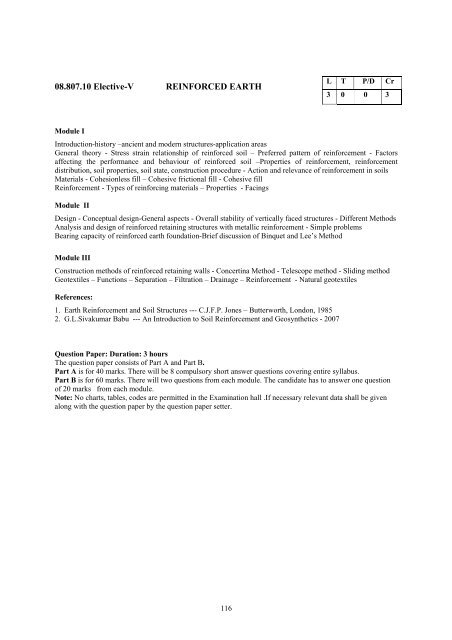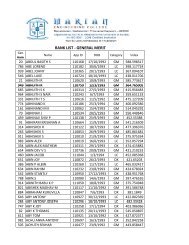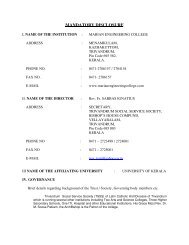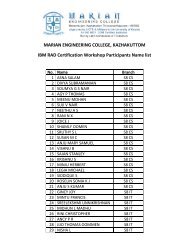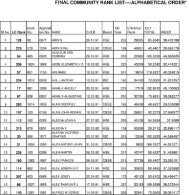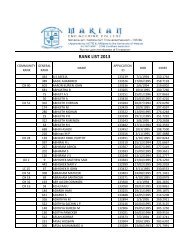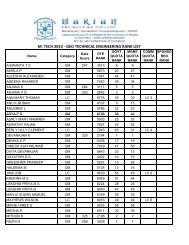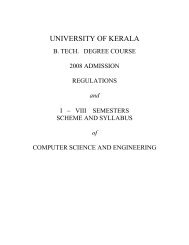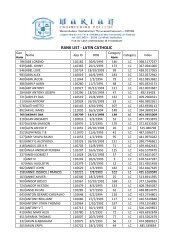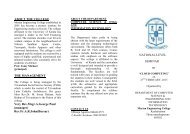UNIVERSITY OF KERALA - College of Engineering, Trivandrum
UNIVERSITY OF KERALA - College of Engineering, Trivandrum
UNIVERSITY OF KERALA - College of Engineering, Trivandrum
You also want an ePaper? Increase the reach of your titles
YUMPU automatically turns print PDFs into web optimized ePapers that Google loves.
08.807.10 Elective-V REINFORCED EARTH<br />
L T P/D Cr<br />
3 0 0 3<br />
Module I<br />
Introduction-history –ancient and modern structures-application areas<br />
General theory - Stress strain relationship <strong>of</strong> reinforced soil – Preferred pattern <strong>of</strong> reinforcement - Factors<br />
affecting the performance and behaviour <strong>of</strong> reinforced soil –Properties <strong>of</strong> reinforcement, reinforcement<br />
distribution, soil properties, soil state, construction procedure - Action and relevance <strong>of</strong> reinforcement in soils<br />
Materials - Cohesionless fill – Cohesive frictional fill - Cohesive fill<br />
Reinforcement - Types <strong>of</strong> reinforcing materials – Properties - Facings<br />
Module II<br />
Design - Conceptual design-General aspects - Overall stability <strong>of</strong> vertically faced structures - Different Methods<br />
Analysis and design <strong>of</strong> reinforced retaining structures with metallic reinforcement - Simple problems<br />
Bearing capacity <strong>of</strong> reinforced earth foundation-Brief discussion <strong>of</strong> Binquet and Lee’s Method<br />
Module III<br />
Construction methods <strong>of</strong> reinforced retaining walls - Concertina Method - Telescope method - Sliding method<br />
Geotextiles – Functions – Separation – Filtration – Drainage – Reinforcement - Natural geotextiles<br />
References:<br />
1. Earth Reinforcement and Soil Structures --- C.J.F.P. Jones – Butterworth, London, 1985<br />
2. G.L.Sivakumar Babu --- An Introduction to Soil Reinforcement and Geosynthetics - 2007<br />
Question Paper: Duration: 3 hours<br />
The question paper consists <strong>of</strong> Part A and Part B.<br />
Part A is for 40 marks. There will be 8 compulsory short answer questions covering entire syllabus.<br />
Part B is for 60 marks. There will two questions from each module. The candidate has to answer one question<br />
<strong>of</strong> 20 marks from each module.<br />
Note: No charts, tables, codes are permitted in the Examination hall .If necessary relevant data shall be given<br />
along with the question paper by the question paper setter.<br />
116


